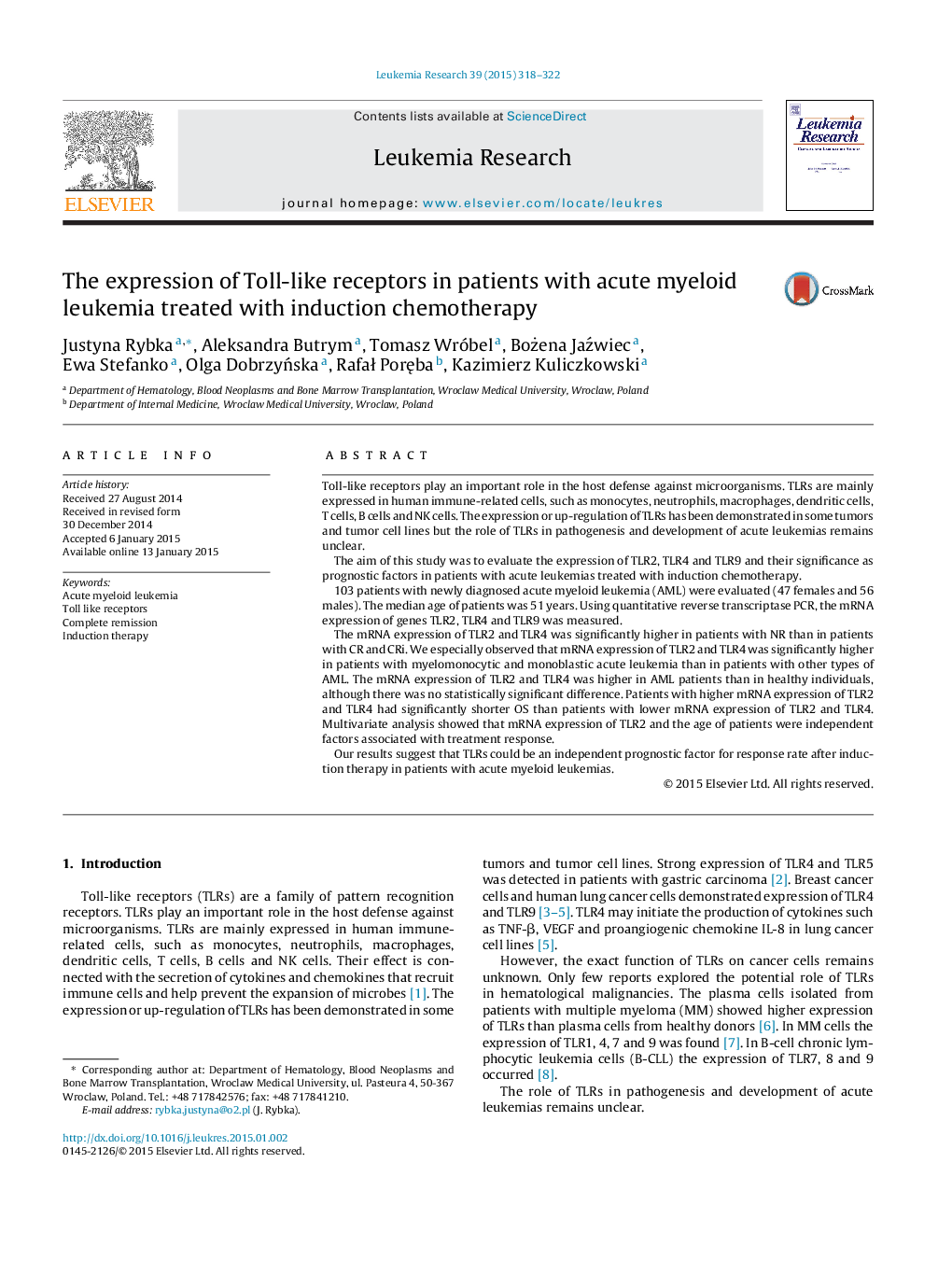| کد مقاله | کد نشریه | سال انتشار | مقاله انگلیسی | نسخه تمام متن |
|---|---|---|---|---|
| 2136685 | 1087809 | 2015 | 5 صفحه PDF | دانلود رایگان |
• The expression of TLRs in patients with AML was evaluated.
• Using RQ-PCR, the mRNA expression of genes TLR2, TLR4 and TLR9 was measured.
• TLRs could be a new prognostic factor for response rate in patients with AML.
Toll-like receptors play an important role in the host defense against microorganisms. TLRs are mainly expressed in human immune-related cells, such as monocytes, neutrophils, macrophages, dendritic cells, T cells, B cells and NK cells. The expression or up-regulation of TLRs has been demonstrated in some tumors and tumor cell lines but the role of TLRs in pathogenesis and development of acute leukemias remains unclear.The aim of this study was to evaluate the expression of TLR2, TLR4 and TLR9 and their significance as prognostic factors in patients with acute leukemias treated with induction chemotherapy.103 patients with newly diagnosed acute myeloid leukemia (AML) were evaluated (47 females and 56 males). The median age of patients was 51 years. Using quantitative reverse transcriptase PCR, the mRNA expression of genes TLR2, TLR4 and TLR9 was measured.The mRNA expression of TLR2 and TLR4 was significantly higher in patients with NR than in patients with CR and CRi. We especially observed that mRNA expression of TLR2 and TLR4 was significantly higher in patients with myelomonocytic and monoblastic acute leukemia than in patients with other types of AML. The mRNA expression of TLR2 and TLR4 was higher in AML patients than in healthy individuals, although there was no statistically significant difference. Patients with higher mRNA expression of TLR2 and TLR4 had significantly shorter OS than patients with lower mRNA expression of TLR2 and TLR4. Multivariate analysis showed that mRNA expression of TLR2 and the age of patients were independent factors associated with treatment response.Our results suggest that TLRs could be an independent prognostic factor for response rate after induction therapy in patients with acute myeloid leukemias.
Journal: Leukemia Research - Volume 39, Issue 3, March 2015, Pages 318–322
